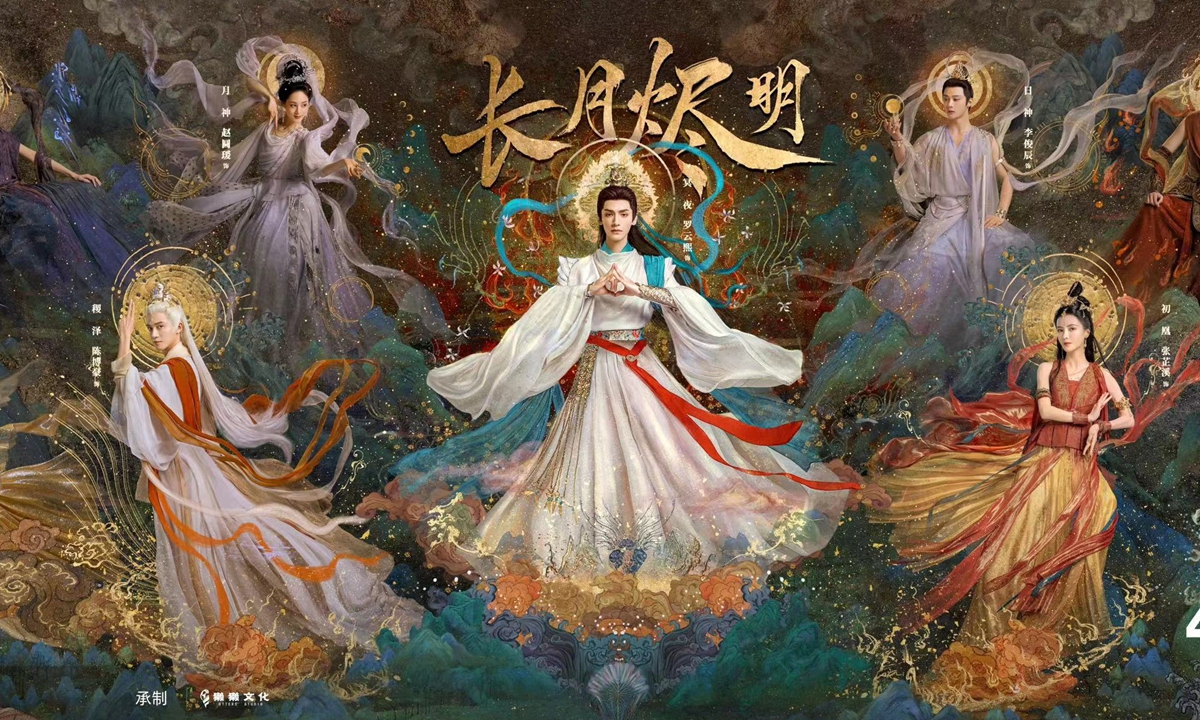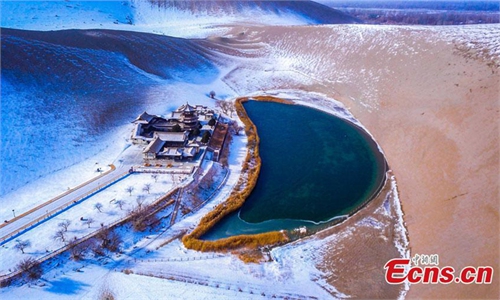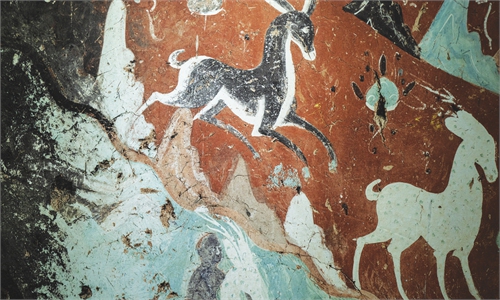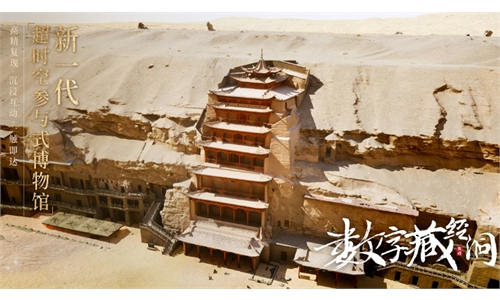ARTS / CULTURE & LEISURE
Fantasy drama overseas hit
Show borrows Dunhuang Mogao Caves aesthetics

Photo: Courtesy of Youku
The Dunhuang Mogao Caves, which are over 1,600 years old, have recently been in the spotlight in Chinese fantasy costume drama Till the End of the Moon. The show has captivated overseas audiences with its stunning portrayal of traditional Chinese culture and the grandeur and beauty of the grottoes.
Dunhuang is a shining gem on the Silk Road and a hub for cultural exchanges between East and West. Its rich cultural history and treasures, including the Mogao Caves, are renowned throughout the world.
Kok Leung Kuk, the director of Till the End of the Moon, told the Global Times that it is important to share and preserve cultural treasures.
He said he believes that the drama's success in China and abroad is due to its strong plot, unique world view, and aesthetic style.
The show's distinctive character design and relationships, recognizable makeup and costumes, and special effects have also contributed to the series' rising popularity.
Till the End of the Moon, starring Luo Yunxi and Bai Lu, premiered on streaming platform Youku in early April.
The series follows an immortal who travels back in time 500 years to prevent the rise of a demon god's dark power.
Since its release, the show has become a trending topic on Chinese social media and sparked discussions about its artistic portrayal of Chinese mythology and cultural heritage.
The show has also had a significant impact on tourism in several cities featured in the series, including Dunhuang in Northwest China's Gansu Province, Bengbu and Xuancheng in East China's Anhui Province, and Hangzhou in East China's Zhejiang Province.
The show has received high ratings on the international platform IMDb, with an initial score of 9.0 out of 10 and a current average score of 8.8 out of 10.
Audiences have praised the show's depiction of ancient murals, costume design and setting.
"We hope to share China's unique aesthetic through the show's great content and allow audiences from different backgrounds to appreciate the enduring charm of Chinese culture," the show's director said.
After deciding to incorporate Dunhuang aesthetics into the show, the director and his team worked to integrate them into the costumes, art and special effects.
This allowed the drama to maintain its core aesthetic ideas from beginning to end.
"This approach allows audiences to appreciate the beauty of traditional Chinese art and the mystery and romance of Chinese mythology," said Luan Hexin, the drama's art designer.
The show's attention to detail has helped to pique audience interest in Chinese culture.
Elements such as the flying Apsaras and mural patterns from the Mogao Caves, the vibrant colors of the unique landscape of the Danxia landform, and Yingluo accessories, which originated from cultural exchanges along the ancient Silk Road, have all contributed to the show's appeal.
These cultural elements also play an important role in advancing the show's narrative. For example, the story draws inspiration from the Shibi Jataka grotto in Mogao Grottoes No.254, which depicts a previous incarnation of Sakyamuni as King Shibi, who offered his flesh to save a pigeon from a falcon. The show also incorporates war scenes inspired by China's 12 Earthly Branches ordering system.
"Till the End of the Moon only scratches the surface of Chinese culture. However, we hope that it can serve as a starting point for introducing Chinese dramas to a wider audience and promoting the recognition and acceptance of traditional Chinese culture, aesthetics, and values," added the director.




